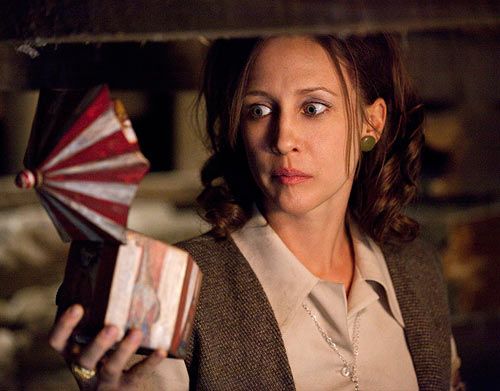
How? It really can curdle your blood, says a new research.
Beware you fans of scary movies! The 'bloodcurdling' sensation that you feel while watching horror movies may be real, suggests a new study.
Such flicks can lead to an increase in the blood clotting protein.
The results suggest that using the term 'bloodcurdling' to describe feeling extreme fear is justified, researchers said.
The term dates back to medieval times and is based on the concept that fear or horror would 'run the blood cold' or 'curdle' (congeal) blood, but the validity of this theory has never been studied.
Researchers set out to assess whether acute fear can curdle blood, which they say poses an important evolutionary benefit, by preparing the body for blood loss during life threatening situations.
The study involved 24 healthy volunteers aged 30 years or younger recruited among students, alumni, and employees of the Leiden University Medical Centre in The Netherlands.
Fourteen were assigned to watch a frightening (horror) movie followed by a non-threatening (educational) movie and 10 to watch the movies in reverse order.
The movies were viewed more than a week apart at the same time of day and in a comfortable and relaxed environment. Both lasted approximately 90 minutes.
Before and after each movie (within 15 minutes), blood samples were taken and analysed for markers or 'fear factors' of clotting activity.
After each movie, participants also rated the fear they experienced using a visual analogue fear scale ranging from 0 (no fear at all) to 10 (worst fear imaginable).
Participants also reported whether they had already seen the movie and completed a general questionnaire on lifestyle and favourite movie genre.
The horror movie was perceived to be more frightening than the educational movie, with a 5.4 mean difference in fear rating scores.
The difference in coagulant factor VIII levels before and after watching the movies was higher for the horror movie than for the educational movie.
Levels increased in 12 (57 per cent) participants during the horror movie, but only in 3 (14 per cent) during the educational movie.
Levels decreased in 18 (86 per cent) participants during the educational movie, but only in 9 (43 per cent) during the horror movie.
However, the researchers found no effect of either movie on levels of other clot-forming proteins, suggesting that although coagulation is triggered by acute fear, it does not lead to actual clot formation.
They concluded that, in young and healthy adults, watching bloodcurdling movies is associated with an increase in blood coagulant factor VIII without actual thrombin formation.
The study was published in The BMJ.











 © 2025
© 2025